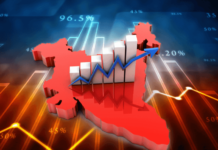Today, both the global trade and cross-border payment landscape is at the center of several trends. Technology innovation, greater competition, changing customer demands, the need for increased security and safety in payments has created a new industry dynamic that values speed and agility.
“It is an exciting time for payments,” noted Victoria Cleland, executive director for banking, payments, and innovation at the Bank of England (BoE). And she is right.
It’s been 70 years since the global multilateral economic system was born and countries decided to build bridges and establish partnerships through trade. General Agreement on Tariffs and Trade, followed by the World Trade Organization, opened up borders to the free flow of goods and services and helped nations reach substantial progress and great results.
Among other things, increased global trade also created opportunities for entrepreneurs, perhaps the biggest being the growing demand for simple, fast, secure, and convenient cross-border payments.
By 2023 international payments are expected to reach $3 trillion.
What is more, the boom in cross-border commerce is writing the next chapter in global payments as well. In 2019, online sales hit a record high and as much as 57 percent of global online shoppers are now cross-border shoppers. Today, e-commerce is considered one of the key drivers of the digital transformation taking place in our economy and society.
During recent months, digital commerce witnessed an extremely rapid acceleration in growth — and the main thing behind it is the Covid-19 crisis.
As trade in traditional goods and services decreased, trade in digital goods and services became even more important. Before the coronavirus pandemic, cross-border e-commerce was already rapidly expanding, but since the crisis, growth has become exponential. For instance, in the US and Canada, overall e-commerce orders have increased by 129 percent compared with last year. Similarly, the digital payments market is now expected to grow this year by 11 percent worldwide and as high 15,9 percent in places like China. What is more, experts say that growth in digital services and digital trade will be critical to a global economic recovery.
When you think about it, the Fourth Industrial Revolution not only brought new innovative technologies to the game but also managed to change the nature of global trade itself, as data flows are becoming more important than physical trade.
Susan Lund, an economist, and partner at McKinsey & Company, a global management
consulting firm that advises many of the world’s largest and most powerful institutions, noted that “Trade is no longer coming only in big boatloads and cargo container ships. The growing segment today is the trade of digital goods and services — for example, downloading a book or a movie or making a phone call on Skype.“ It’s hard to measure, but McKinsey found that cross-border bandwidth is 45 times larger compared to 2005. It also calculated that the flow of data across borders contributed more to global GDP than the trade in physical goods.
However, some challenges in the industry — even if we get to witness digitalization trends at their best — remain.
Euro Exim Bank, a revolutionary financial institution with a ‘Class A’ international banking license from Financial Services Regulatory Authority of St. Lucia, which serves clients in over 100 countries, noticed that some common barriers, such high cross-border transfer fees, low settlement timescales, poor foreign exchange rates, trade bureaucracy still make things tough in the global trade arena.
Then there’s also slow cross-border payments — an area, which is still considered a time-consuming and overall tense for financial institutions. The main reason why is simple: cross-border payments are inherently complex, involving multiple parties, currencies, regulations, markets, risks, and systems.
Besides, as of today, banks dominate cross-border payments with a market share of 95 percent, but their money transfers are characterized by a lack of transparency, high fees, and delays. These long-standing inefficiencies have opened the door to new players that use cutting-edge technologies, such as AI, blockchain, internet of things — to provide innovative and customer-centric services to both businesses and consumers.
However, while new cutting edge technology gets a lot of attention, the short-term future of facilitated global trade depends on more grounded payments innovations.
Saxo Payments Banking Circle, the global transactions services provider, surveyed 200 merchants that are already conducting international trade. Anders la Cour, CEO of Saxo Payments, commented on the results, noting that “The digital landscape is breaking down barriers between regions, opening up a global market and global customer base. But the practicalities and costs of payments often stand in the way of this progress. Half of the merchants who responded to our survey said their biggest concern about making and accepting cross-border payments is the transaction fees. 40 percent are concerned about getting the best foreign exchange rate, and the speed of processing payments is a concern for 29 percent. These are all issues emanating from the traditional correspondent banking infrastructure.”
While we’re at it, foreign exchange rates have actually been a serious challenge for cross-border payments and global trade. The global foreign exchange market is by far the largest financial market with its daily trading volume of over $5 trillion.
To put it simply, ever since countries abandoned the gold standard, national currencies have floated against one another on a global market. Their values fluctuate depending on several factors, including a country’s economic activity and growth prospects, interest rates, and geopolitical risk. However, when currencies fluctuate in a big way, they can create economic uncertainty and instability, affecting capital flows and international trade. A good example was the current conflict between the US and China over international trade, which had serious consequences for foreign exchange rates and the prices of other assets — think stocks, bonds, and precious metals.
But as in this trade war there will be no winners, it looks like the year 2020 still has some surprises up its sleeve when it comes to cross-border payments.
Kaushik Punjani, Director at Euro Exim Bank, noted that “2020 is expected to be a big year for further application of technological innovation in trade finance. As Free Trade Agreements (FTA’s) ease the movement of goods and oil the wheels of commerce, coalitions are forming to provide faster and more appropriate trade finance services to meet not only the logistics but the financial needs of producers, customers, and shippers.“






















